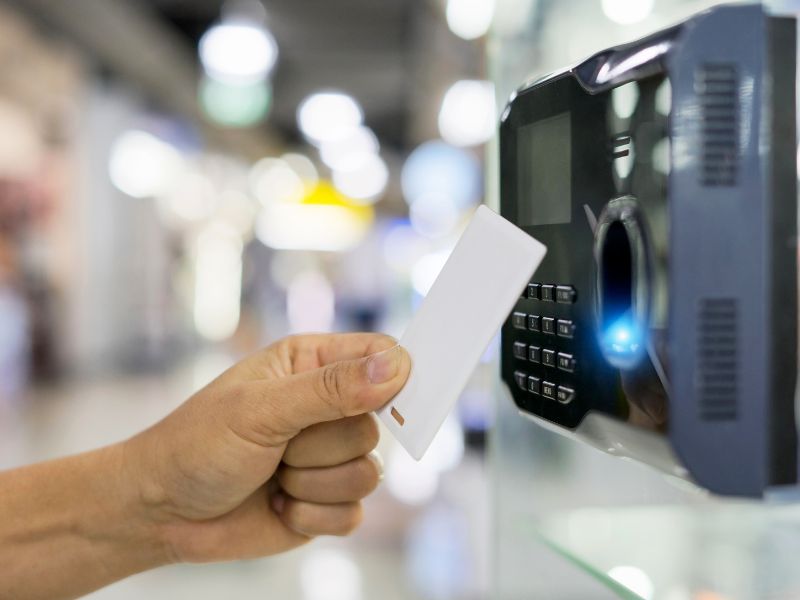Too Much Time and Resource Spent on Daily Reporting, It is not Automatically Collated.
Save valuable teacher time by automating student attendance with our robust attendance management system.




Mobile App Installation: The institution provides faculty members with a dedicated mobile app designed for managing class attendance. The app is installed on the instructors’ smartphones or tablets.
Authentication: Faculty members log in to the mobile app using their credentials, typically provided by the institution. This ensures secure access to attendance-related features.
Class Selection: Upon logging in, instructors select the class for which they want to take attendance from a list of their scheduled courses.

Attendance Marking: Instructors have the option to mark attendance manually or digitally. For manual marking, they can simply tap on the names of students present in the class. For digital marking, they may use various methods such as QR codes, NFC tags, or Bluetooth beacons placed in the classroom, which students can scan or connect to using their smartphones.
Real-time Updates: As attendance is marked, the app updates attendance records in real-time. This allows instructors to instantly see who is present and who is absent during the class session.

Integration with Student Information Systems: The attendance data recorded through the mobile app is integrated with the institution’s student information system (SIS) or attendance management system. This ensures that attendance records are accurately maintained and can be accessed by relevant stakeholders.
Attendance Reports: Instructors can generate attendance reports directly from the mobile app. These reports may include statistics such as attendance percentages, trends over time, and individual student attendance records.

Faculty members can take attendance anytime, anywhere, directly from their mobile devices, eliminating the need for manual attendance sheets or dedicated hardware.

Attendance records are updated instantly, providing timely insights into student attendance patterns.

The streamlined process of marking attendance digitally saves time for instructors and reduces administrative overhead.


Face Enrollment: Students’ faces are enrolled in the system by capturing images or videos of their faces. These images are then processed to create unique biometric templates that represent each student.
Face Recognition Cameras: High-resolution cameras equipped with face recognition algorithms are installed at the entrance or within the classroom.
Face Detection: As students enter the classroom, the face recognition cameras detect their presence and capture images or video footage of their faces.

Biometric Matching: The captured facial images or videos are compared against the enrolled biometric templates stored in the system’s database. Sophisticated algorithms analyze facial features such as the distance between the eyes, nose, and mouth to perform accurate matching.
Attendance Recording: Once a match is found between the captured image and the enrolled template, the student’s attendance is automatically recorded in real-time.

Verification and Security: Face recognition systems often incorporate additional security measures to ensure the accuracy and integrity of attendance data, such as liveness detection to prevent spoofing attempts.
Integration with Attendance Systems: Attendance data collected through face recognition technology can be seamlessly integrated with existing attendance management systems or school databases.

Face recognition technology offers highly accurate attendance tracking, reducing the likelihood of errors or inaccuracies associated with manual methods.

The automated nature of face recognition systems streamlines the attendance process, saving time and effort for both students and teachers.

Students can check-in for attendance without the need for physical interaction with the system, promoting hygiene and minimizing the spread of germs.

Teachers and administrators can access real-time attendance data and monitor attendance trends instantly.

Face recognition systems provide an additional layer of security by ensuring that only enrolled students can register their attendance.


NFC-Card: Each student is provided with an NFC-Card, typically a student ID card.
NFC Reader: The classroom is equipped with an NFC reader placed at the entrance or another convenient location.
Tap to Record Attendance: As students enter the classroom, they simply tap their NFC-enabled card on the reader.

Data Transmission: The NFC reader captures the unique identifier associated with each student’s device and transmits this data to a centralized database or attendance management system.
Attendance Recording: The attendance management system records the time and date of each tap, automatically marking students as present.
Real-time Tracking: Teachers and administrators can access real-time attendance data, allowing them to monitor attendance trends and address any discrepancies promptly.

NFC technology enables quick and hassle-free attendance tracking, saving valuable class time.

Students only need to carry their NFC-enabled card, eliminating the need for paper-based attendance sheets or additional hardware.

The automated system reduces the likelihood of errors or inaccuracies associated with manual attendance taking.

UHF attendance systems can be integrated with existing school management software, facilitating seamless data synchronization and analysis.

NFC technology offers secure communication between devices, ensuring the privacy and integrity of attendance records.


UHF RFID Tags: Each student is provided with a UHF RFID tag / Card, embedded in their ID card.
UHF Reader Setup: UHF readers are strategically placed at entry points to classrooms or other designated areas.
Detection Range: UHF technology has a longer detection range, allowing for attendance to be recorded as students enter the classroom without the need to tap or make physical contact with the reader.

Automatic Detection: As students pass through the detection range of the UHF reader, their RFID tags are automatically detected and registered by the reader.
Data Transmission: The UHF reader transmits the captured data, including the unique identifier associated with each student’s RFID tag, to a centralized database or attendance management system.

Attendance Recording: The attendance management system logs the time and date of each detection event, marking students as present in real-time.
Monitoring and Reporting: Teachers and administrators can access attendance data in real-time, monitor attendance trends, and generate reports as needed.

UHF technology enables rapid and contactless attendance tracking, minimizing disruptions and optimizing class time.

UHF readers can accommodate a large number of students simultaneously, making them suitable for use in classrooms with high attendance levels.

Automated detection reduces the risk of human error associated with manual attendance taking methods.























A student attendance management system is a tool to monitor student attendance digitally in schools and other educational institutions. It often is a part of the larger software – school management ERP software wherein it works with other modules to give your school the ease of automation and better management.
A student attendance management system typically uses biometric, RFID, or barcode scanning technology to track student attendance. The data is then stored in a centralized database that can be accessed by teachers, parents, and school administrators.
Benefits of using a student attendance management system include improved student performance, reduced truancy rates, increased efficiency, better communication between stakeholders, and reduced workload for teachers.
The following list depicts the major advantages of the student attendance management system for schools & colleges.
The “Assistance Control” project was inspired by the basic idea of the “Bologna Process”, a Pan-European collaboration which started in 1999, to adapt technology to provide a better quality of education that would allow improvement of the next generation of classroom teaching.
The best project finally chosen and tested involved students registered for classes with NFC phones, during the academic year 2011–2012 at “Universidad Pontificia de Salamanca, Campus Madrid” (UPSAM).
This resulted in the senior students at the School of Computer Engineering to certify 99.5% accuracy and ease of attendance that ensured continuous assessment without loss of instructional time allocated to this activity.
Source : Science Direct Volume 40 Issue 11, 1st September 2013, Pages 4478-4489